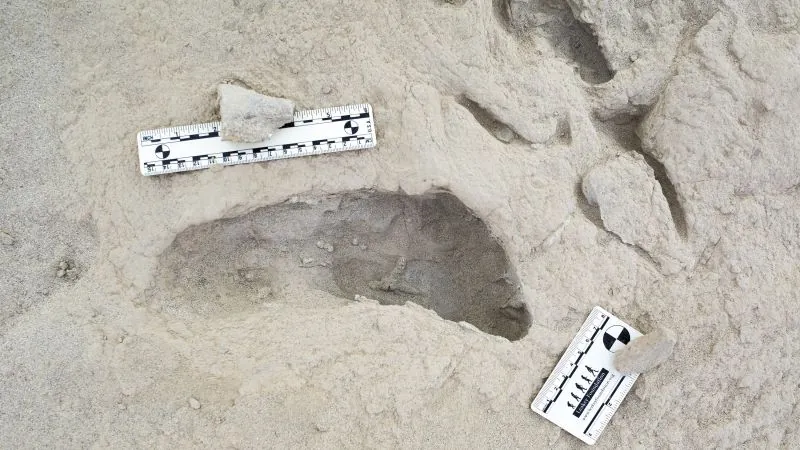
Ancient Footprints Provide Fascinating Insight into Early Human Interaction
2024-11-28
Author: Ken Lee
The Discovery of Ancient Footprints
In an incredible revelation that could rewrite our understanding of human evolution, researchers have uncovered fossilized footprints revealing that two distinct species of ancient humans roamed the same lakeshore over 1.5 million years ago. This remarkable finding highlights a moment in time when early hominins may have coexisted, potentially interacting rather than competing for resources.
Excavation at Koobi Fora
The footprints were discovered during excavations at Koobi Fora, along Kenya's eastern shore of Lake Turkana, an area already known for yielding significant fossil finds. The initial clues appeared in July 2021, when a single hominin print was found alongside tracks from large birds. The excavation had to be paused temporarily to ensure careful analysis could be conducted later, leading to a much larger excavation in 2022 where a total of 14 hominin footprints were uncovered.
Analysis and Findings
Kevin Hatala, an associate professor at Chatham University, along with his team, meticulously analyzed the footprints. Their work revealed that one trackway could be attributed to Paranthropus boisei—an early hominin known for its robust jaw and teeth, adapted for a plant-heavy diet—while the other three footprints were made by Homo erectus, a larger-brained species considered a direct ancestor of modern humans.
Implications of Coexistence
The presence of both species in this habitat serves to enhance our understanding of hominin social dynamics. "It's stunning to think about two large-bodied species inhabiting the same area without evidence of intense competition. They might have been aware of each other's existence and could have exchanged glances or even interacted," Hatala noted.
Dietary Preferences and Lifestyle Choices
The study, published in the journal Science, emphasizes the exceptional preservation of the footprints. They were closely laid together, without any signs of cracking, suggesting they were made only hours to days apart—indicating these ancient beings traversed the same muddy banks in a potentially shared economic landscape.
Summary of the Findings
But how did these two species coexist? Experts argue it could be that their dietary preferences and lifestyle choices allowed them to thrive side by side. P. boisei had specialized adaptations for a herbivorous diet, while H. erectus was more omnivorous, which could have mitigated direct competition for food resources.
A Historical Snapshot
Briana Pobiner, a research scientist at the Smithsonian, remarked on the implications of this finding. "This is more than just footprints in the mud; it represents a historical snapshot of interaction between two species—showing they lived, moved, and possibly competed in the same geographical area."
Ecosystem Diversity
In addition to the footprints, the site was teeming with other fossilized remnants revealing a diverse ecosystem, including tracks from large birds and herbivorous mammals. The footprints etched into the earth serve not merely as a reminder of where these ancient humans walked, but as a prompt for modern scientists to delve into the complex relationships among early species and their environments.
Conclusion
Overall, the footprints serve as a beacon of hope for our understanding of human evolution, illustrating that the story of our ancestors is just as much about collaboration as it is about competition. Future explorations at this remarkable site could continue to unveil the rich tapestry of our distant past.


 Brasil (PT)
Brasil (PT)
 Canada (EN)
Canada (EN)
 Chile (ES)
Chile (ES)
 España (ES)
España (ES)
 France (FR)
France (FR)
 Hong Kong (EN)
Hong Kong (EN)
 Italia (IT)
Italia (IT)
 日本 (JA)
日本 (JA)
 Magyarország (HU)
Magyarország (HU)
 Norge (NO)
Norge (NO)
 Polska (PL)
Polska (PL)
 Schweiz (DE)
Schweiz (DE)
 Singapore (EN)
Singapore (EN)
 Sverige (SV)
Sverige (SV)
 Suomi (FI)
Suomi (FI)
 Türkiye (TR)
Türkiye (TR)